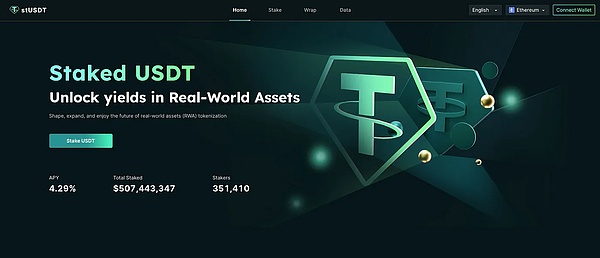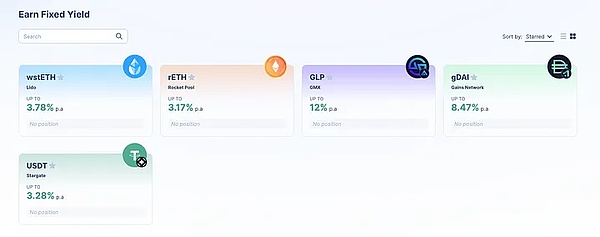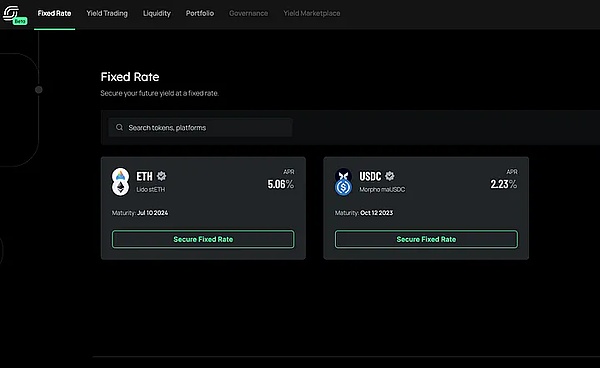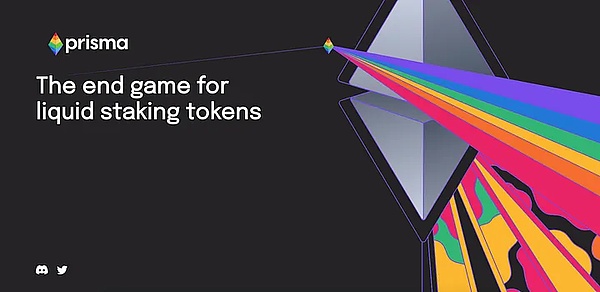Original Author | Crypto Ann
Original Translation | Baze Institute
If you are not a “professional” in the field of cryptocurrency, it can be very challenging to keep up with the various sub-domains of cryptocurrency/DeFi. That’s why I think it’s a good idea to hype up the “narratives” of all the sub-domains of cryptocurrency (along with the interesting protocols associated with them).
Real World Assets (RWA)
While Bitcoin is trying to break into TradFi through ETFs, assets such as bonds have already penetrated the DeFi world.
- Admitting fault, American exchange Bittrex settles with SEC for a $24 million fine.
- LianGuai Morning News | Top 15 Stock ETFs of the Year are all related to cryptocurrencies
- Zee Prime Co-founder Disappointed with the pseudo-innovation of DeFi, destruction of value outweighs creation of value.
Enthusiasts believe that RWA is a way to bring more institutional funds to DeFi. Recently, we have seen a lot of discussions about RWA, and market interest has translated into outstanding performance of RWA-related tokens such as MakerDAO.
In addition to existing participants such as MakerDAO, Synthetix, and Tether, a new RWA protocol called Ondo Finance has recently caught people’s attention. Ondo Finance aims to provide access to various TradFi assets, such as the US money market and on-chain US Treasury bills. This is an extremely convenient way for non-US investors who cannot enter the US market.

Some previous RWA protocols have attempted to bring TradAssets onto the chain, with a concept similar to Ondo, but have never been fully successful. The biggest obstacle is trustworthiness. After all, RWA is semi-custodial, as the protocol plays the role of a “bank” responsible for custodializing your real-world assets (bonds, stocks). Ondo stands out with the influence and experience of BlackRock, a TradFi asset management company.
Are there risks to RWA?
I have my own doubts about the concept of RWA. It is more about the assets themselves than the concept of DeFi/cryptocurrency. Take US Treasury bills as an example. With recent credit rating downgrades and the looming debt crisis caused by unsustainable interest payments, RWA brings yet another risk to the DeFi space—a significant one.
Tether and DAI face criticism due to their heavy reliance on US Treasury bills. If their claims are true, Tether could become the largest holder of US Treasury bills globally. Given that USDT is one of the most well-known stablecoins, forming trading pairs with almost all tokens, any potential default by the US government could potentially trigger the decoupling of USDT and potentially disrupt the entire cryptocurrency market and ecosystem.

At least, RWA is not just limited to US Treasury bills, which is also the focus of some RWA protocols currently. Ondo Finance’s product, USDY, represents short-term US government bonds and bank current deposits, rather than long-term US Treasury bills that led to the collapse of Silicon Valley Bank earlier this year. I think this is a better approach in uncertain market conditions. Even Warren Buffett only buys short-term US Treasury bills.
Fixed Income
Recently, in the field of DeFi liquidity mining, people are increasingly leaning towards fixed investment returns.
In the face of market uncertainty, guaranteed returns can provide peace of mind. For example, the staking yield of Ethereum is known to be volatile. Returns during a bull market may differ from returns during a bear market, and it is difficult to predict or quantify how much money you can earn.
The concept of fixed income is very simple. When you invest, you typically receive a series of returns over a period of time.
Pendle and Spectra
Pendle is one of the protocols with rapid growth in TVL this year. They provide fixed income rates for various staked assets such as Lido’s stETH, RocketPool’s rETH, GMX’s GLP, and even stablecoins.
Each pool on Pendle has an expiration date, which is the date when the pool stops earning income.

Spectra is a newcomer to the fixed income narrative. Its workings are very similar to Pendle, although currently you can only stake Lido’s stETH and USDC in this protocol.

Fixed Loans
In addition to staked assets, another area in the DeFi market where investors have a strong demand for fixed income is the lending market. Just like in the real world, even though interest rate policies may change, you can still earn interest during the loan period – another excellent hedge against market uncertainty.
In DeFi collateralized lending protocols, when the value of the collateral deposit exceeds the value of the loan, the lending protocol operates smoothly, allowing the borrower to access liquidity without selling the assets deposited in the protocol. However, when the value of the collateral deposit decreases or the value of the loan increases, the borrower may have an incentive to default, which can put both the lender and the borrower in a difficult situation.
That’s where liquidation comes in, which is an operation triggered when your collateral assets are not enough to cover your loan. Liquidation involves the sale of the collateralized assets by someone else and may require the borrower to pay a certain penalty.
Recently, the founder of Curve was almost liquidated in the Curve hack incident because his loan interest rate skyrocketed to 70%-88%. This liquidation mechanism is necessary in collateralized lending protocols. As market conditions worsen, borrowers will be forced to repay their loans.
Term Finance
I recently came across an interesting protocol. Term Finance allows you to borrow money at a fixed interest rate for a set period of time (e.g., 4 weeks at 4%). The interest rate is determined through an auction. The borrower sets a bid and the lender sets a bid. The number resulting from the “bidding” on the interest rate becomes the final rate. The auction starts/ends every Thursday.

veToken
veTokens have been a narrative in DeFi for a long time, possibly as a result of continuous experimentation by DeFi developers. More importantly, in such a bear market, veTokens are one of the best strategies for accumulating assets and earning profits.
Currently, veToken protocols are mostly blue-chip DeFi projects that have survived the bear market, such as CRV from Curve, BAL from Balancer, and FXS from Frax.
However, what interests me are not these native veToken protocols, but the protocols built on top of them.
Because unless you are a “whale,” the veToken mechanism is not that profitable. From yield to voting rights, these aspects are usually not that impressive for individuals with smaller holdings.
So, what is the solution? You can mortgage your veTokens through protocols like StakeDAO.
StakeDAO
In the veToken narrative, StakeDAO is at the top. The goal of this protocol is to serve as the ultimate destination for your veTokens.
In StakeDAO, you have the opportunity to combine your assets with other people’s assets, thereby increasing your returns and gaining additional benefits from a larger pool of funds, such as increased voting rights.

StakeDAO supports various veTokens, and the APR often hovers in the double digits. For example, the current annual interest rate for staking veCRV through StakeDAO is 38%. Another attractive feature I found in this protocol is that they constantly add more pools from new veToken players. Recently added features include vePendle from Pendle and veBPT from the new NFT platform BlackPool.
LSDFi
The DeFi community is constantly striving to maximize the use of staked ETH.
For example, EigenLayer has proposed the concept of “re-staking,” allowing you to stake ETH again to protect other protocols (e.g., data availability chains).
Recently, a new project in LSDFi caught my attention, Prisma Finance. Although it is currently in the pre-launch stage, the project is interesting enough to raise a question: Can Prisma Finance become the ultimate protocol for LSD, similar to turning DAOs into veTokens?

Since the project’s official website is not yet online, we can only understand their plans through their blog. Highlights:
-
Users will be able to mint stablecoins supported solely by LSD tokens. Therefore, apart from ETH itself, the underlying assets will not bring additional risks.
-
veToken mechanism. (Will StakeDAO also support this project?)
-
Various LST tokens from Lido, Frax, RocketPool, etc.
Conclusion
In addition to the aforementioned DeFi narratives, there are many popular narratives in the extensive crypto industry.
For example, “AI + Crypto”, projects like Giza Tech are attempting to transform machine learning models into smart contracts. However, projects in this narrative are usually composed of tools and are not really worth investing in.
You may have also noticed that I did not introduce the recent “hot but not mainstream” narratives. These narratives are not only easily influenced by rumors, but also do not support sound investments apart from speculation. For example, the one-way bridge of the Base chain and the unverified DEX (LeetSwap) that led to hackers exploiting vulnerabilities, as well as people recklessly sending cryptocurrencies to wallets created by bots (Telegram Bot).
Risk Warning:
The above projects and viewpoints should not be considered investment advice. DYOR. According to the “Notice on Further Preventing and Dealing with the Risks of Virtual Currency Trading Speculation” issued by central banks and other departments, the content of this article is for information sharing only and does not promote or endorse any business or investment activities. Readers are strictly advised to comply with local laws and regulations and not engage in any illegal financial activities.
Like what you're reading? Subscribe to our top stories.
We will continue to update Gambling Chain; if you have any questions or suggestions, please contact us!